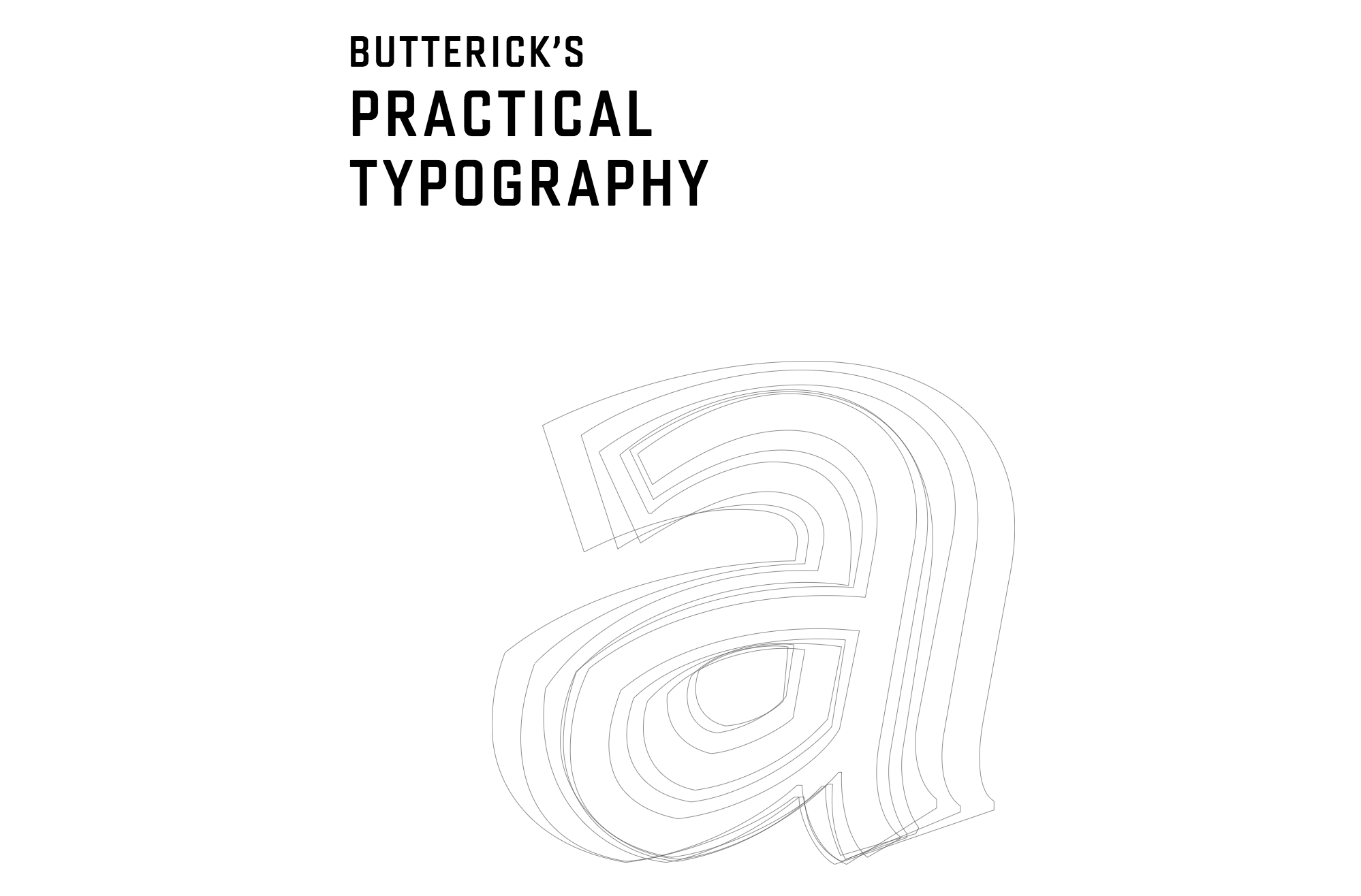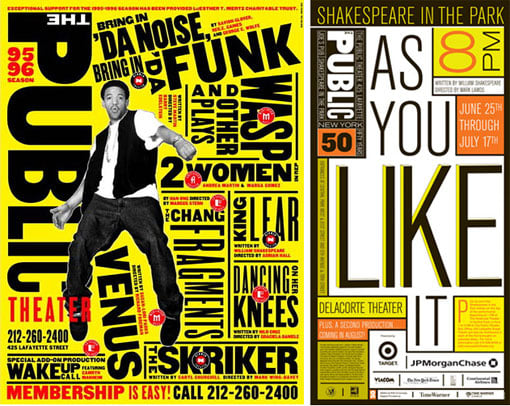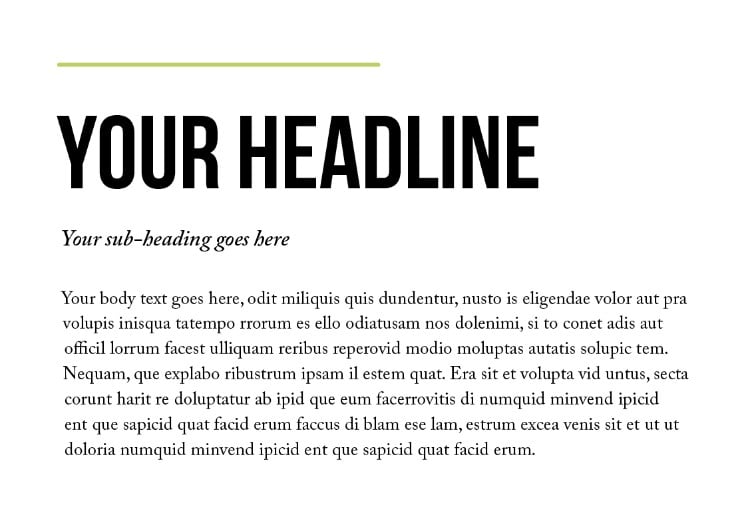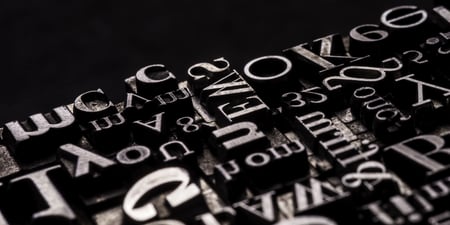Oh typography. How I love thee. The power of type cannot be overstated. A piece of text rendered in the right font choice has the ability to convince people to buy something or vote for somebody. Typography is literally everywhere. From the campaign signage still sitting in your neighbor’s yard 18 months after the last election cycle, to the lady’s monogrammed purse taking up a spot on the city bus.
Type has long been used to as a branding tool. Some of the earliest trademarks from brands like Stella Artois and Twinings Tea feature logos that use a piece of typography as their central design element. In fact, Twinings has used the same logo for over 227 years!
Typography can transcend time. From humble beginnings as merely a string of letters, type arranged in just the right way can evolve into something the evokes an emotional response in all who come across it.
A Quick Primer On What Is Typography

Familiarizing oneself with the power of typography, on the web or in print, is arguably one of the best things one can do to drastically improve their design skills. Because, in many cases, typography is all you need to convey the message you are trying to get across.
Better people than me have already written extensively on the subject of typography. Matthew Butterick writes almost exclusively on the subject. His digital book Practical Typography is a splendid resource for quickly brushing up on the subject.
In one section, the book lists 26 key rules for typography including some of my favorites:
- Use centered text sparingly.
- All caps are fine for less than one line of text.
- Never use underlining, unless it’s a hyperlink.
All in all, this is a wonderful resource and one that is readily available by visiting https://practicaltypography.com/. Give it a read after you finish this blog.
Typography Can Make The Brand

In my introduction, I name-dropped some brands that use typography as a central part of their overall visual identity. Type can be used in logos, on marketing materials and in advertising campaigns to capture attention and drive engagement. Typography is pretty, and when used correctly can take on a life of its own. What if that life was your brand?
Typography can lend your brand a tone of voice, visually speaking. Of all the aspects of graphic design, type can give printed words emotion. Something as simple as hitting the “italics” button in a word processing program, can transform a mundane sequence of words into a key takeaway. Simple tweaks is what typography is all about. Finding the right combination of thicks and thins, Sans Serif fonts and Serif ones, is in large part the first step to creating a typographic language for your brand.
Perhaps one of the more famous explorations of typography on behalf of a brand, comes from Paula Scher and her work for the Public Theater in New York. The main mark plays with varying degrees of thickness in the letterforms to create a wordmark that moves even when standing still. This quote from the project page puts it more eloquently:
[The identity] creates a graphic language that reflects street typography in its extremely active, unconventional and almost graffiti-like juxtaposition.
Because they began with type, the rest of the identity system seemingly falls into place; from banners on busses to the signage hanging from lamp posts. That was 1994. To this day, even the occasional passerby can identify a piece of Public Theater collateral from a street corner away.
Taking the Next Steps: Choosing Fonts

No two font families are the same. Sure, they may be of the same style, but subtle differences make each unique. And I do mean subtle. I Love Typography has a great post comparing perhaps two of the more popular fonts in use today: Arial and Helvetica.
Having at least a simple understanding of the differences between one font and the next will give you good footing when deciding what fonts to use on behalf of your brand. The three places in your branding you’ll want to consider making unique choices for fonts include the following:
Logo
This is perhaps the most visual part of your brand. It gets left behind in the mind of your customer long after they’ve interacted with you or your product. Many display fonts work well as a basis for designing a logo. Because you’ll want to instill character in your logo, you may even opt for a custom hand drawn piece of lettering. In either case, the font in your logo doesn’t necessarily have to be the font you use elsewhere in your brand identity.
Headline Copy
In marketing copy, both on the web and in print, headlines help make your content usable, contributing to a more positive customer experience. Headlines are scannable and break up long blocks of content that otherwise might be glossed over. Like with your logo font, you have a bit more leeway when determining what font to use in this space. Don’t go too crazy though! There is something to be said for preserving readability and legibility. Find yourself a font that has enough personality to stand out, but is built to be a workhorse.
Body Copy
Paragraphs should be easy to read. Choosing something like Arial or Helvetica is a safe bet. Sans Serif typefaces like these work well for body copy when displayed on the screen. But what about the printed page? Because of their unique structure, many argue Serif fonts are better in print. When it comes to your brand identity it’s probably best practice to define which fonts are used in either space. Set rules for the web and for print, so that those executing collateral on behalf of your brand can remain consistent across all channels.
This is Only the Beginning
Typography can be a powerful marketing tool all on its own. It’s time to give it the respect it deserves.
Learning even a little bit about typography will help you think more critically about how your marketing collateral looks and what it’s saying about your brand. Your brand identity should include rules for using type across print and the web as every piece of your visual identity has a role to play in building brand equity. The same care you put into designing a logo should be applied to the fonts you’re going to use everywhere else. Don’t leave consistency to chance.





